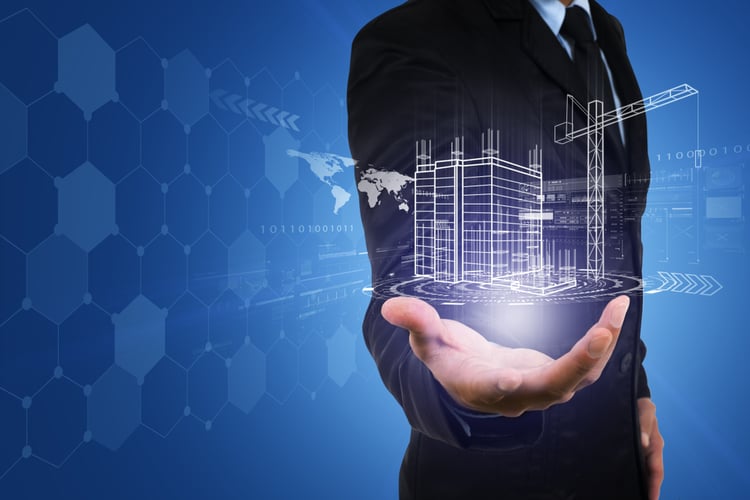How to Get the Energy Efficiency Tax Credit for Commercial Buildings

The 179D Energy-Efficient Commercial Buildings Tax Deduction has existed since 2006, and the benefit became permanent with the Consolidated Appropriations Act of 2021. This is a major incentive for commercial property developers and owners: they can qualify for a federal tax credit of $1.88 per square foot, or a partial tax credit of up to $0.63 per square foot.
Building owners can get the 179D tax credit if they achieve at least 50% savings with respect to the performance level required by the ASHRAE Standard 90.1. These savings must be achieved with a combination of energy efficiency measures in four key areas: lighting, building envelope, HVAC systems, and hot water systems.
Get a professional energy audit and claim all incentives available for your building upgrade.
There are two important requirements when claiming the energy efficiency tax credit for a building. Savings must be calculated with respect to the latest version of ASHRAE 90.1, and they must be demonstrated with energy modeling software approved by the IRS. The tax credit is available for both new constructions and existing buildings, and the deduction is normally claimed by the building owner. However, tenants may qualify if they assume the cost of energy upgrades.
Which Building Upgrades Qualify for the Energy Efficiency Tax Credit?

As mentioned above, the 179D tax credit focuses on four areas: indoor lighting efficiency, building envelope performance, HVAC efficiency, and water heating efficiency. By achieving 50% savings with a combination of energy upgrades, the building becomes eligible for a tax deduction of $1.88 per square foot. The Database of State Incentives for Renewables and Efficiency (DSIRE) provides a list of the main technologies and upgrades covered by the tax credit:
- Equipment Insulation
- Water Heaters
- Lighting
- Lighting Controls/Sensors
- Chillers
- Furnaces
- Boilers
- Heat pumps
- Air conditioners
- Caulking/Weather-stripping
- Duct/Air sealing
- Building Insulation
- Windows
- Siding
- Roofs
- Tankless Water Heaters
Other energy efficiency measures that target the four performance areas also qualify, as well as whole-building upgrades. In all cases, the building must use IRS approved software to demonstrate 50% savings.
In general, the 179D energy efficiency tax credit is available for commercial buildings that use electricity or fossil fuels. The tax deduction is not available for single-family homes and multifamily buildings up to three stories. Religious organizations don’t qualify either, since they are exempt from taxes. In government-owned buildings, the deduction can be claimed by the project designer.
Which Buildings Get the Partial Energy Efficiency Tax Credit?
The partial tax credit of $0.31-$0.63 per square foot is available for buildings that achieve specified performance levels with individual building systems. There are two options, which are summarized in the following table:
|
Partial tax credit option |
Requirements |
|
Partially qualifying property |
10% envelope savings 15% HVAC and hot water savings 25% lighting savings |
|
Interim lighting rule |
25% - 40% reduction in lighting power density (50% reduction for warehouses) |
Regardless of the tax credit achieved (full or partial), it cannot exceed the cost of the energy upgrades that were used to claim the benefit. Building owners must also be aware that the 179D tax deduction can only be claimed for entire properties, and not for specific areas. For example, if certain parts of a building reach the required savings but the entire property does not, you cannot claim a tax credit for those specific areas.
The same building can qualify for the 179D energy efficiency tax credit and the solar federal tax credit, since they are separate incentives. However, the electricity savings achieved with solar panels don’t count towards the requirements of the energy efficiency tax credit.
IRS Approved Software for Energy Modeling

The 179D energy efficiency tax credit is only available for building owners who can demonstrate their performance with energy modeling software approved by the IRS. The US Department of Energy provides a list of the options available: DesignBuilder, DeST, DOE-2.2, EnergyGauge, EnergyPlus, eQuest, Hourly Analysis Program (HAP), IES Virtual Environment, OpenStudio with EnergyPlus, TAS, TRACE 3D Plus, TRACE 700, and TRNSYS.
NY Engineers offers professional energy modeling and consulting services, and we can design the building upgrades that will help you qualify for the 179D tax credit.

Michael Tobias
Michael Tobias, the Founding Principal of NY Engineers, currently leads a team of 150+ MEP/FP engineers and has led over 4,000 projects in the US
Join 15,000+ Fellow Architects and Contractors
Get expert engineering tips straight to your inbox. Subscribe to the NY Engineers Blog below.

